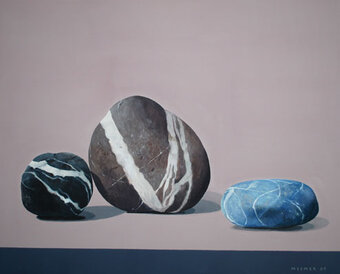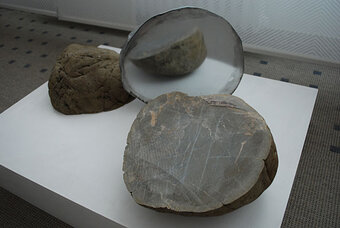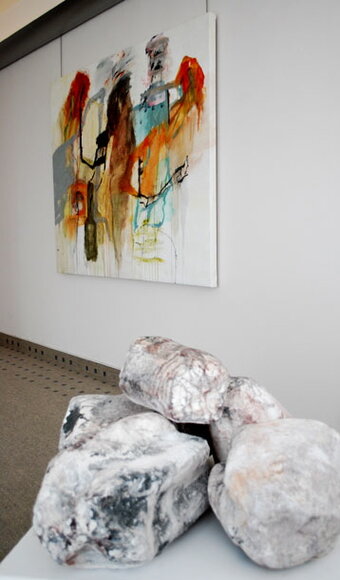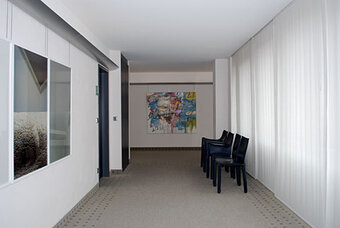Stone
July 5 to August 21, 2009Reality does not behave in such a way that it can be imitated, as it is in a permanent process. This Romantic credo revolutionized the painting of the early 19th century and particularly that of Expressionism. But at the latest with the sometimes bizarre experiments of Pop or Fluxus, art drew level with nature: aesthetic processes presented themselves as a "second nature" or as an "art-nature" parallel to reality.
In the Heart Center, more romantic variants can be seen. This is not about natural dynamics, but about proving the processual nature of nature - however slow and protracted it may be. The traces of development can be seen on the stone, which has evolved over many millions of years, in the form of tiny veins. They bear witness to movement. The Romantic artist Jospeh Anton Koch translated this idea into his mountain landscapes around 200 years ago. When the stone suddenly frees itself from its rocky surroundings and thunders down into the valley in a kind of torrent, it has found a new and chaotic home a short time later. And once again, the aesthetic view provokes speculation: A movement has come to an abrupt halt in the pile of rubble.
The exhibition provides surprising insights into the theme of "stone" and inspires interpretations. You have to read for yourself what a stone can be from the pictures and sculptures.





